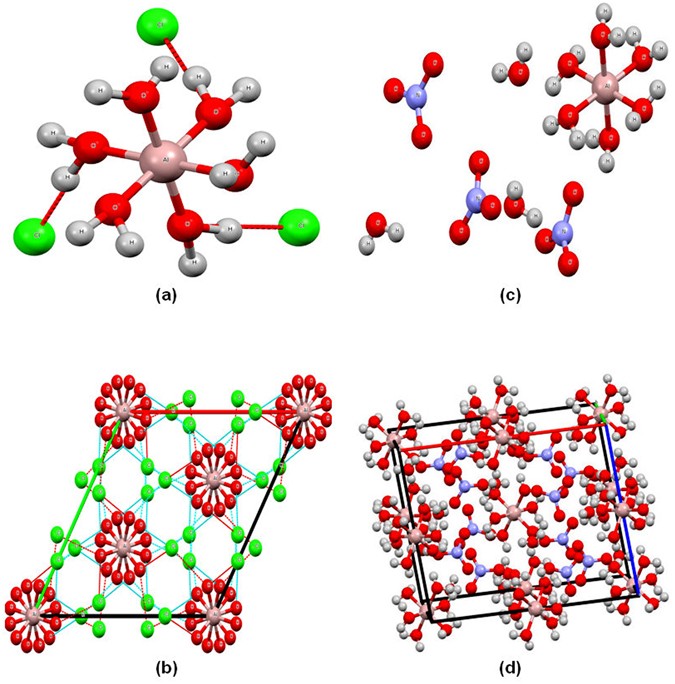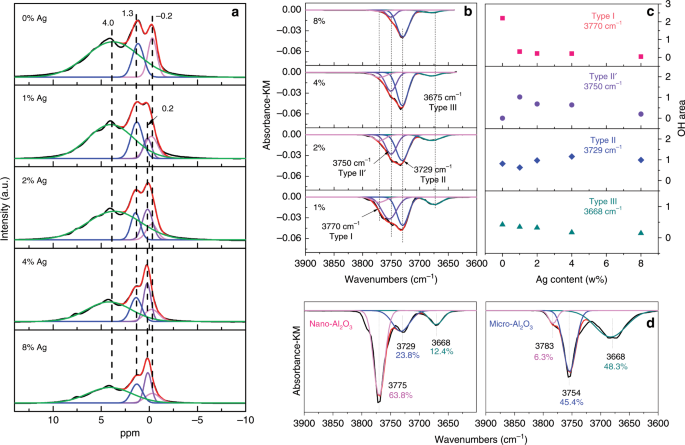


Taking advantage of dynamic nuclear polarization (DNP) technique 35, 36, 37, 38, Pruski and coworkers showed the direct observation of Brønsted acid sites at natural abundance by 17O DNP surface-enhanced NMR spectroscopy (SENS) on silica-alumina samples. High-resolution two-dimensional (2D) experiments, such as 29Si- 17O heteronuclear correlation (HETCOR) and 17O multiple-quantum (MQ) MAS experiments were reported in the structural characterization of inorganic materials (e.g., zeolite) 34. Additionally, advanced NMR methods and techniques are required to further enhance sensitivity and resolution. Therefore, the acquisition of 17O MAS NMR spectrum often entails 17O isotopic enrichment 33. However, a combination of quadrupolar nature for 17O nucleus (I = 5/2), relatively low gyromagnetic ratio ( γ = −5.774 MHz T −1), and low 17O abundance (0.037%) leads to great difficulties using 17O NMR to investigate oxide-based materials especially at conventional magnetic fields (≤14.1 T). 17O magic-angle spinning (MAS) NMR has been utilized in recent years to probe the local environments of oxygen atoms in various oxygen-containing materials 27, 28, 29, 30, 31, 32. Solid-state NMR spectroscopy is a powerful and versatile tool for structural characterization of materials in either ordered or disordered states via the measurement of nuclear spin interactions 22, 23, 24, 25, 26.

Thus, determination of oxygen species in γ-Al 2O 3 is prerequisite for understanding its structure and physicochemical property, which has remained a great challenge. The oxygen speciation (e.g., hydroxyl or defects) of γ-Al 2O 3 impacts its surface properties (i.e., acidity/basicity), and in many cases the proposed catalytic mechanisms are closely related to the local environment of oxygen atoms 21. The surface species, particularly the coordinatively unsaturated atoms in γ-Al 2O 3 are usually correlated with particle size, morphology and pretreatment conditions 18, 19, 20. Unambiguous determination of the location of Al and O atoms is hampered by the large line-broadening of reflections/diffuse scattering pattern of small γ-Al 2O 3 particles in X-ray diffraction (XRD), neutron diffraction (ND) and electron diffraction characterizations. Over the past decades, considerable efforts have been devoted to experimental and/or theoretical explorations of the structure and nature of γ-Al 2O 3, which however remain poorly understood 8, 9, 10, 11, 12, 13, 14, 15, 16, 17. Optimization and rational design of related heterogeneous catalysts rely on detailed knowledge of the structure–property relationship. γ-Al 2O 3 is widely used in a broad range of industrial catalytic reactions such as alcohol dehydration, propane dehydrogenation, isomerization, alkylation and catalytic cracking 7. In particular, the variability of their structure/phase and localized electronic structures has motivated widespread applications of metal oxides in heterogeneous catalysis 1, 2, 3, 4, 5, 6. Owing to their specific physical and chemical properties, metal oxides are of great importance in the field of materials and chemical science as diverse as electronics, energy storage and catalysis.


 0 kommentar(er)
0 kommentar(er)
